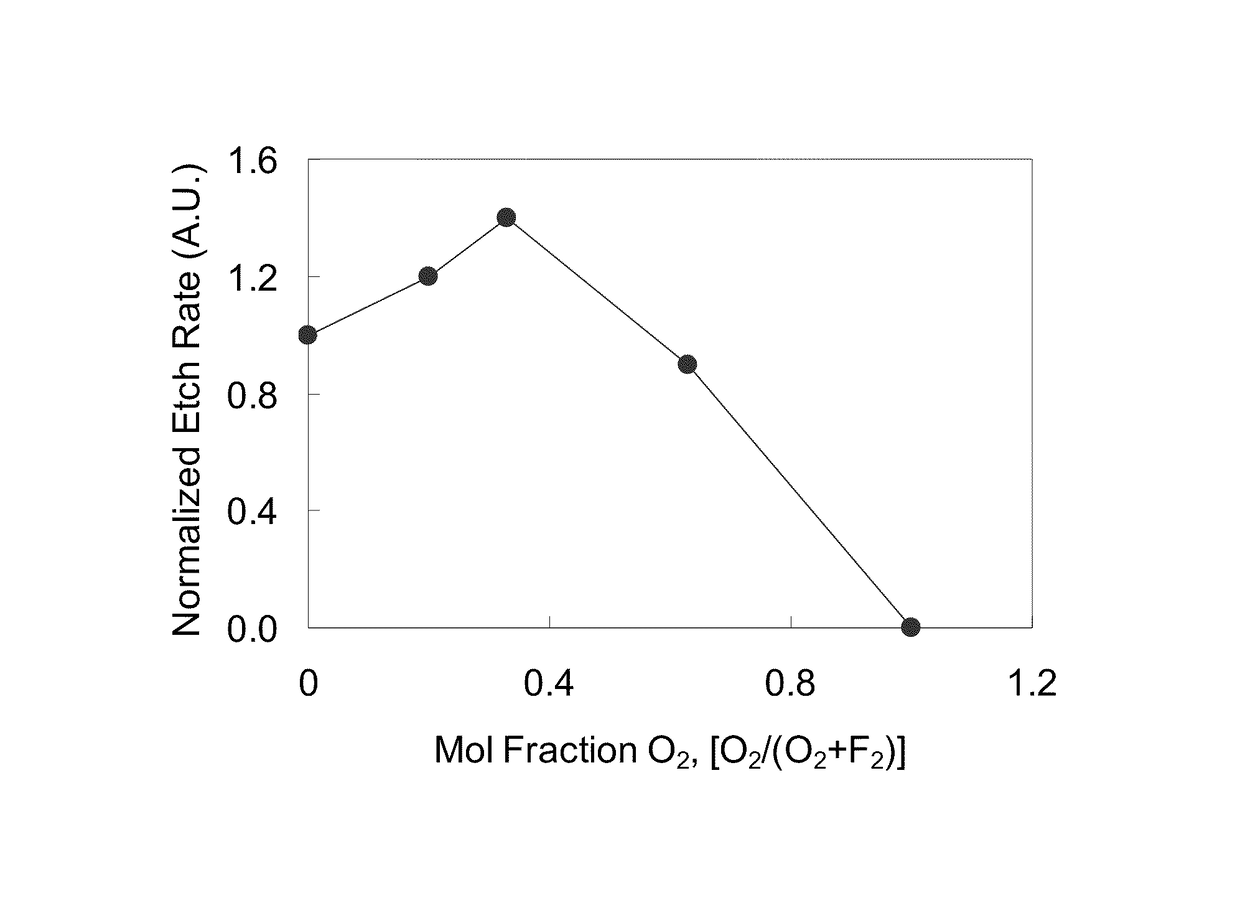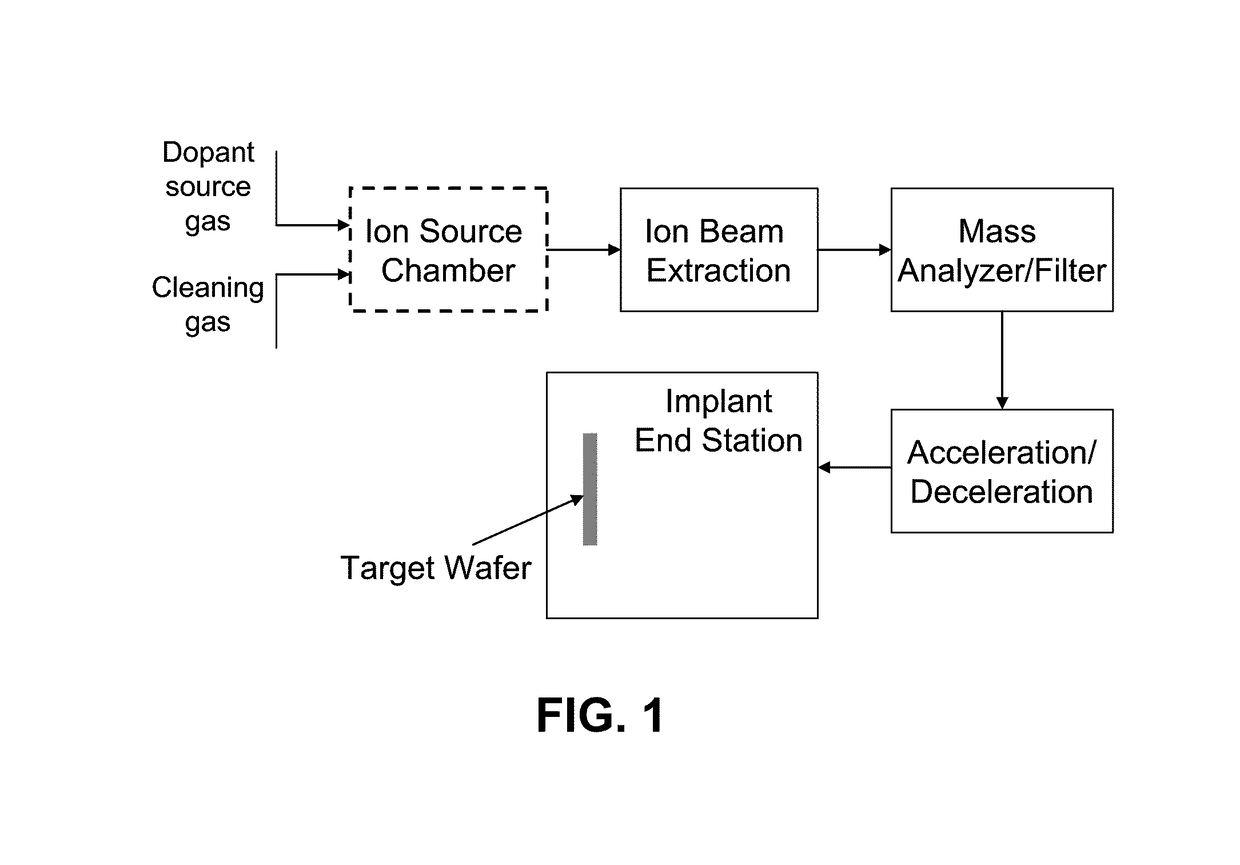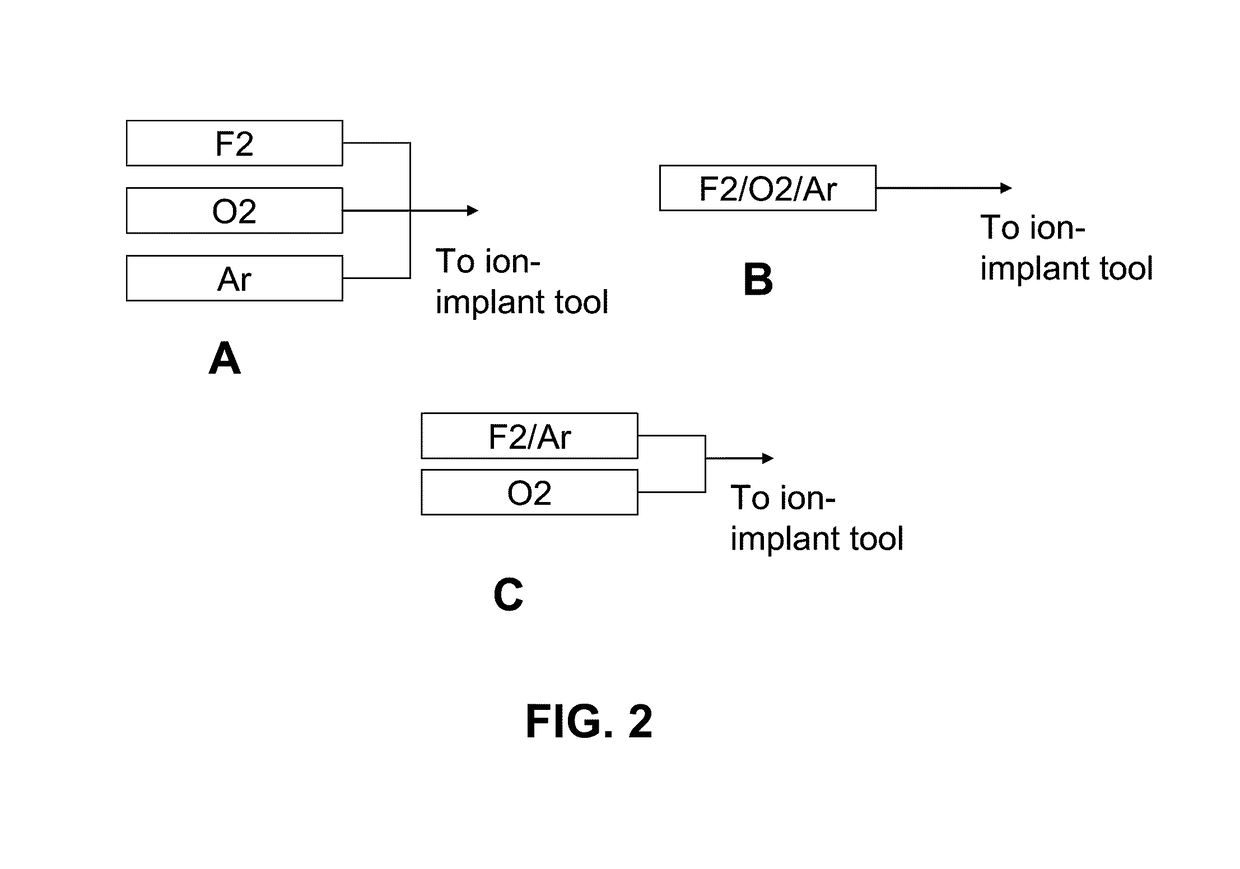Method for ion source component cleaning
a technology of ion source components and cleaning methods, which is applied in the direction of vacuum evaporation coating, cleaning of hollow articles, coatings, etc., can solve the problems of frequent downtime, accumulated residue deposits that interfere with the successful operation of ion source, and reduce tool utilization, so as to improve tool utilization and cleaning operation speed, the effect of improving the utilization ra
- Summary
- Abstract
- Description
- Claims
- Application Information
AI Technical Summary
Benefits of technology
Problems solved by technology
Method used
Image
Examples
example 1
[0060]The performance of NF3 cleaning gas with different variations of cleaning gas chemistry used in this invention was compared. Under similar processing conditions, F2 / Ar and F2 / Ar / O2 mix demonstrated better removal rates than NF3 (see Tables A and B below). For the thermally activated cleaning process, F2 / Ar / O2 resulted in greater than 2× faster residue deposit removal rate even at lower temperature. Also, when operated under a combination of plasma and thermal activation, F2 / Ar / O2 based chemistry exhibited better removal rates than NF3 based chemistry. In addition, due to lower bond dissociation energy of F—F bonds in F2 compared to N—F bonds in NF3, less plasma power is required to sustain fully dissociated F2 plasma in comparison to NF3 plasma. Higher residue deposit removal rates in combination with low power requirements offer the user a wider process window to perform desired cleaning operation.
[0061]
TABLE AActivation Mode: ThermalO2 / F2 molPressureTemperatureRemoval RateCl...
example 2
[0063]Experiments were conducted to evaluate removal rate of deposits from carborane dopant gas at different operating conditions. FIG. 4 presents removal rate observed at different flow rates of F2 / O2 / Ar mix (F2:O2:Ar-0.18:0.09:0.73) and F2 / Ar mix (F2:Ar-0.20:0.80). The mix compositions used in these experiments are:
[0064]F2 / O2 / Ar mix: F2:O2:Ar=0.18:0.09:0.73, i.e., F2 / [F2+Ar]=0.20 and O2 / [O2+F2]=0.33
[0065]F2 / Ar mix: F2:Ar=0.20:0.80, i.e. F2 / [F2+Ar]=0.20
[0066]FIG. 4 depicts the effect of cleaning gas flow and chamber pressure on removal rate. Pressure values listed beside each data point is the chamber pressure during corresponding experiment. It is observed that for both F2 / Ar and F2 / O2 / Ar mix removal rate drops by only about 1.9× and about 1.6× respectively with an about 5× reduction in cleaning gas flow (and corresponding chamber pressure) thus indicating more efficient utilization of cleaning gas in low flow-low pressure mode. It is also desirable to maintain low pressure (less...
PUM
| Property | Measurement | Unit |
|---|---|---|
| mole ratio | aaaaa | aaaaa |
| mole ratio | aaaaa | aaaaa |
| temperature | aaaaa | aaaaa |
Abstract
Description
Claims
Application Information
 Login to view more
Login to view more - R&D Engineer
- R&D Manager
- IP Professional
- Industry Leading Data Capabilities
- Powerful AI technology
- Patent DNA Extraction
Browse by: Latest US Patents, China's latest patents, Technical Efficacy Thesaurus, Application Domain, Technology Topic.
© 2024 PatSnap. All rights reserved.Legal|Privacy policy|Modern Slavery Act Transparency Statement|Sitemap



